Facilitating Community Risk Communication for Wide-Area Evacuation during Large-Scale Floods
Abstract
:1. Introduction
2. Current States of Wide-Area Evacuation and Objectives of this Study
3. Flood Risk in the Kofu Basin
4. Risk Communication Models for Wide-Area Evacuation
4.1. CAUSE Model
4.2. Community Disaster Management Plan
5. Role of Stakeholders in Wide-Area Evacuation
5.1. BECAUSE Model
5.2. Final Goal of Risk Communication Based on the BECAUSE Model
5.3. Risk Communication from BE to S
5.4. Enactment
5.5. Author Proposals for a Flood-Resilient Kofu Basin
5.6. Evaluation of Participants’ Level of Understanding
6. Comparison between Previous and Present BECAUSE Models
7. Conclusions
- (1)
- In the Riverside District in Chuo City, the author proposed and implemented new processes based on the CAUSE model and implemented these twice for wide-area evacuation plan development. The first process covered the evacuation plan of the 3rd Residents’ Association, and the second process expanded it to the entire Riverside District (1400 households 4000 people). As a result, the community disaster management plan of the whole district on the wide-area evacuation plan was formulated.
- (2)
- The author applied the BECAUSE model to implement risk communication to promote wide-area evacuation plan formulation and proposed a new bottom-up process with a specific evacuation plan formulation initially by community residents. In the process, the author suggested the role of each stakeholder, such as residents in Riverside District, Chuo City, Yamanashi Prefecture, and MLIT, for the wide-area evacuation. This suggestion was accepted and mutually confirmed by involving specific sectors in a panel discussion via a disaster management symposium.
- (3)
- A questionnaire survey of participants in the symposium indicated that 95% of respondents believe that such wide-area evacuation is “necessary” or “necessary to some extent” where it was confirmed that the purpose of the panel discussion was sufficiently understood by the participants. Moreover, 47% of the respondents stressed that community residents should be the main body in formulating a regional evacuation plan. Around 75% of the resident respondents confirmed that they should be the main body, which validates the proposal of the author. Although Yamanashi Prefecture assumed that evacuation measures are basically the role of the municipalities even during wide-area evacuation, the municipalities believed that several issues should be entrusted to Yamanashi Prefecture given the scale. This suggests that further risk communication between the two is essential to effectively formulate an evacuation plan.
- (4)
- The author proposed that both structural and non-structural measures should be implemented steadily if the basic concept of the Kofu Basin being resilient to floods is to be taken into account. This was displayed with the enforcement of the Kofu Basin Promotion Ordinance.
Author Contributions
Funding
Acknowledgments
Conflicts of Interest
References
- Cabinet Office of Japan. Disaster Management in Japan. Available online: http://www.bousai.go.jp/1info/pdf/saigaipamphlet_je.pdf (accessed on 10 May 2019).
- Murosaki, Y.; Tominaga, Y. Chapter 5 Mutual-Help in Creation of People to Confront Disasters; Minerva Shobo: Kyoto, Japan, 2018; pp. 77–86. (In Japanese) [Google Scholar]
- Cabinet Office of Japan. Flood and Sediment Disasters. Available online: http://www.bousai.go.jp/kyoiku/pdf/h30_tebikisho_english.pdf (accessed on 10 May 2019).
- Joso City Flood Control Verification Committee. Verification Report on Disaster Response to Flood in Joso City Due to Kinugawa River Flood; Joso City Flood Control Verification Committee: Joso, Japan, 2015. (In Japanese) [Google Scholar]
- Irie, S. How did citizens in Joso City evacuate when the Kinugawa River broke down? Broadcast Res. Surv. 2016, 36–65. (In Japanese) [Google Scholar]
- Verification Committee of the July 2018 Heavy Rain Disaster, Okayama Prefecture. Verification Report on the July 2018 Flood Disaster. Available online: http://www.pref.okayama.jp/uploaded/life/601705_5031910_misc.pdf (accessed on 10 May 2019).
- Suzuki, T. System creation and information sharing environment aiming for wide area cooperation at the time of large-scale Disaster. City Plan. Rev. 2015, 64, 64–67. (In Japanese) [Google Scholar]
- Suzuki, T. Wisdom, Technique, Mechanism to Protect Life from Great Disaster; Shizuoka Academic Publishing: Shizuoka, Japan, 2014; pp. 154–196. (In Japanese) [Google Scholar]
- Suzuki, T.; Uno, S. Development of Disaster Response Management System with Inter-organizational Coordination. J. Disaster Inf. Stud. 2012, 10, 122–133. (In Japanese) [Google Scholar]
- Rowan, K. Why rules for risk communication are not enough: A problem-solving approach to risk communication. Risk Anal. 1994, 14, 365–374. [Google Scholar] [CrossRef]
- Rowan, K.; Botan, C.H.; Kreps, G.L.; Samoilenko, S.; Farnsworth, K. Risk Communication Education for Local Emergency Managers: Using the CAUSE Model for Research, Education, and Outreach. In Handbook of Risk and Crisis Communication; Taylor and Francis: London, UK, 2009; pp. 168–191. [Google Scholar]
- Suzuki, T.; Watanabe, T.; Okuyama, S.I. Community Disaster Management Plan to Implement Extensive Evacuation without a Single Victim against Flooding. J. Community Disaster Manag. Soc. C Bosai 2018, 13, 35–50. (In Japanese) [Google Scholar]
- Suzuki, T.; Hada, Y.; Miyamoto, T. Application of the BECAUSE Model to Establishment of a Collaboration System with Relevant Administrative Agencies for Regional Evacuation due to Large River Flooding Capability and Training Process of its Introduction. J. Disaster Inf. Stud. 2016, 14, 105–115. (In Japanese) [Google Scholar]
- Yamanashi Prefecture. Disaster Management Basic Regulations of Yamanashi Prefecture. Available online: https://www.pref.yamanashi.jp/bousai/documents/bousaijoureihonbun.pdf (accessed on 10 May 2019).
- Ohara, M.; Sawano, H.; Banba, M.; Nakayama, H. Analysis on People’s Attitudes to Strategies for Promoting Local Activity to Change Ways of Living in the Area at Flood Risk. J. Jpn. Soc. Nat. Disaster Sci. 2017, 36, 91–107. (In Japanese) [Google Scholar]
- Banba, M.; Okai, Y. Analysis of land use and building control of flood risk management of Japan and France. J. City Plan. Inst. Jpn. 2017, 52, 610–616. (In Japanese) [Google Scholar]
- Nara Prefecture. Regulations on Promotion of Comprehensive Flood Control in Yamato River Basin. Available online: http://www.pref.nara.jp/secure/187197/jyourei.pdf (accessed on 10 May 2019).
- Suzuki, T. Risk communication process applicable to make the Kofu Basin resilient to flood. KASEN River May 2019, 23–27. (In Japanese) [Google Scholar]
- Yamanashi Prefecture. Hospitality Yamanashi Tourism Promotion Ordinance. Available online: https://www.pref.yamanashi.jp/kankou-k/documents/omotenashijyourei.pdf (accessed on 10 May 2019).
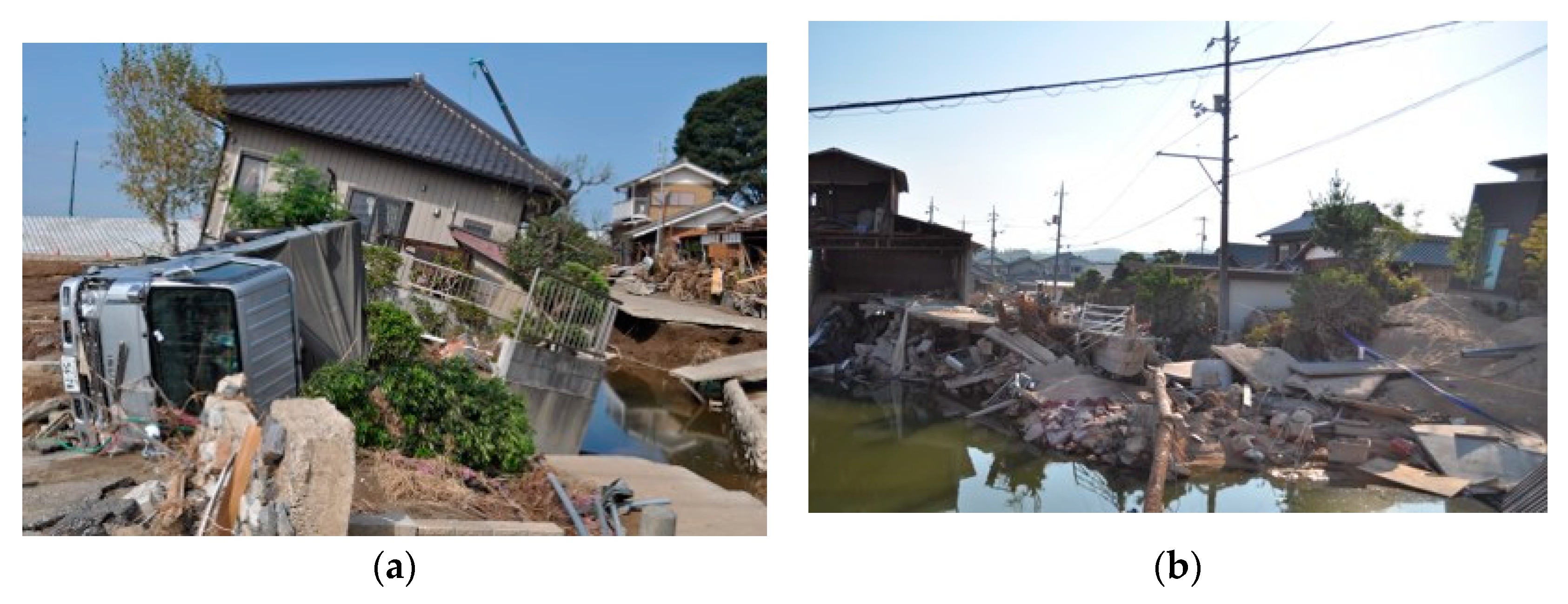
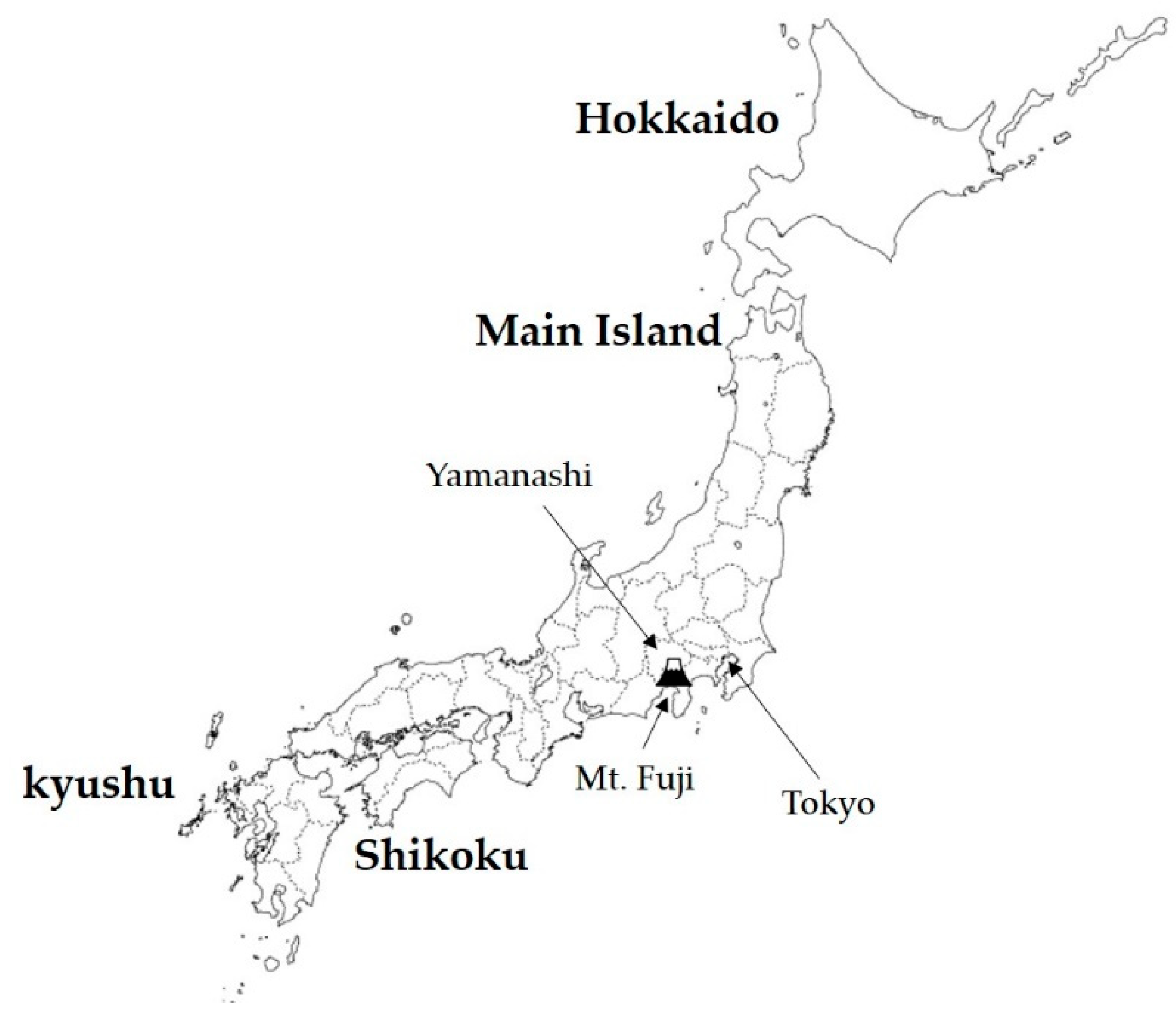
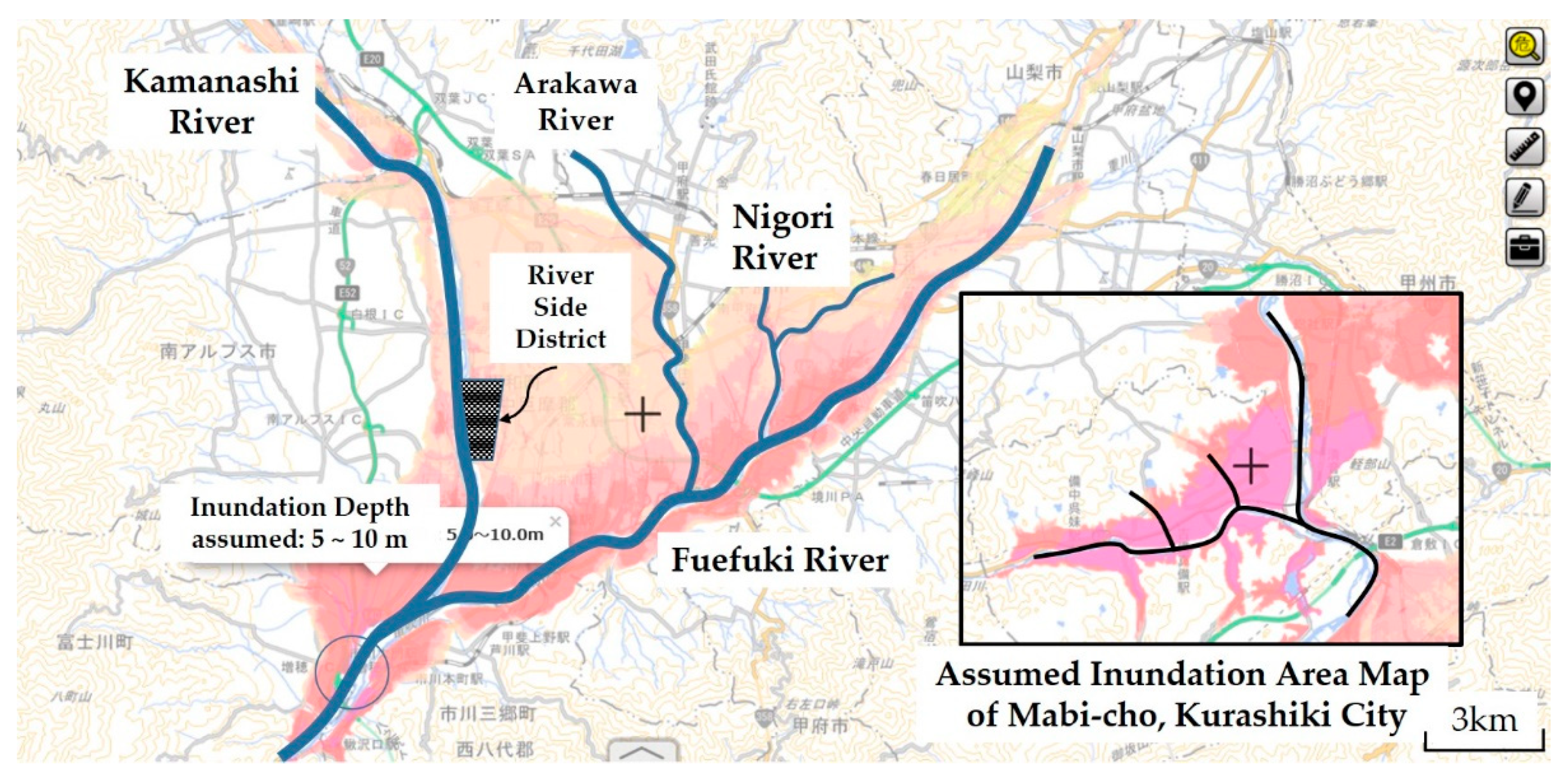
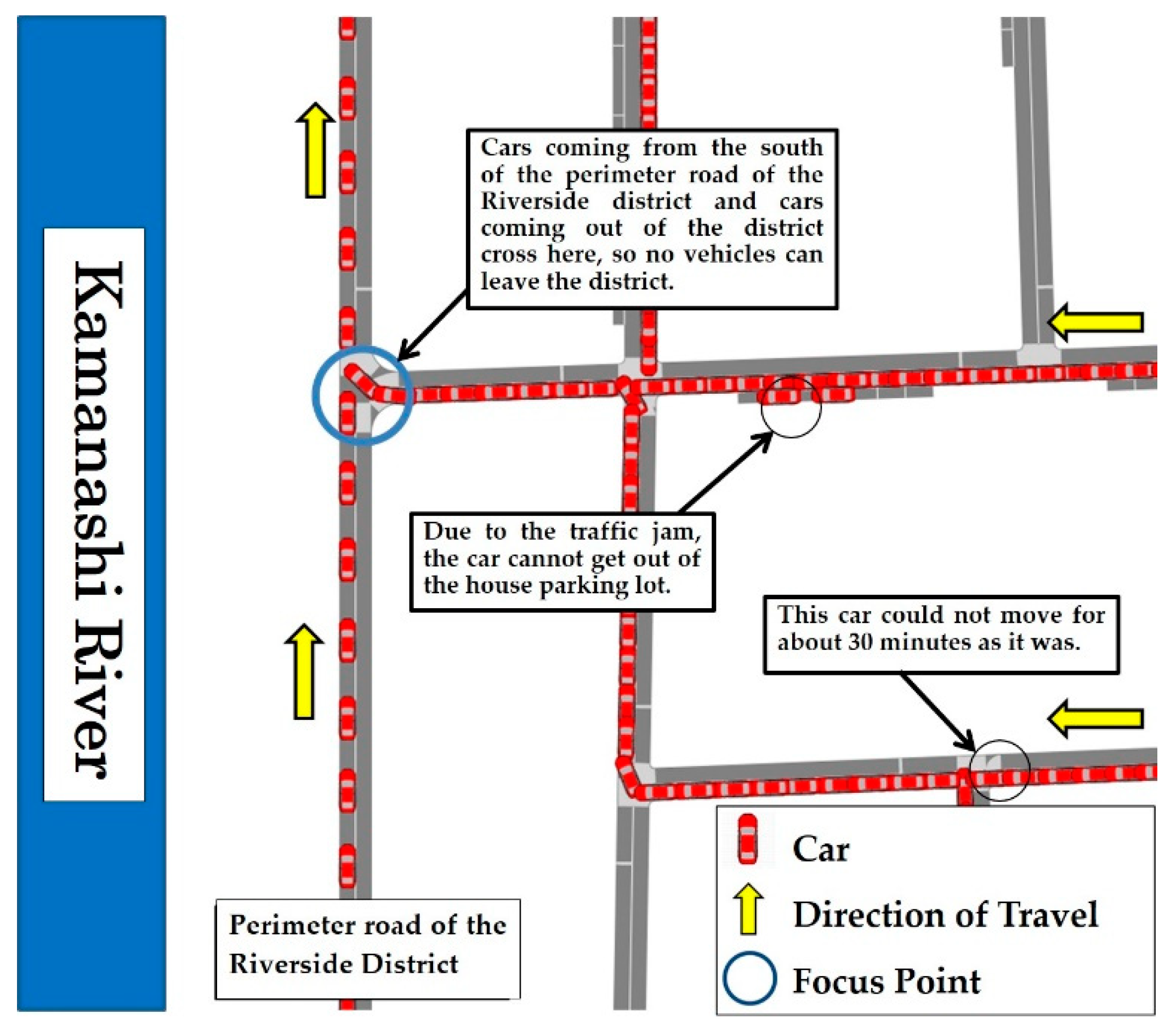
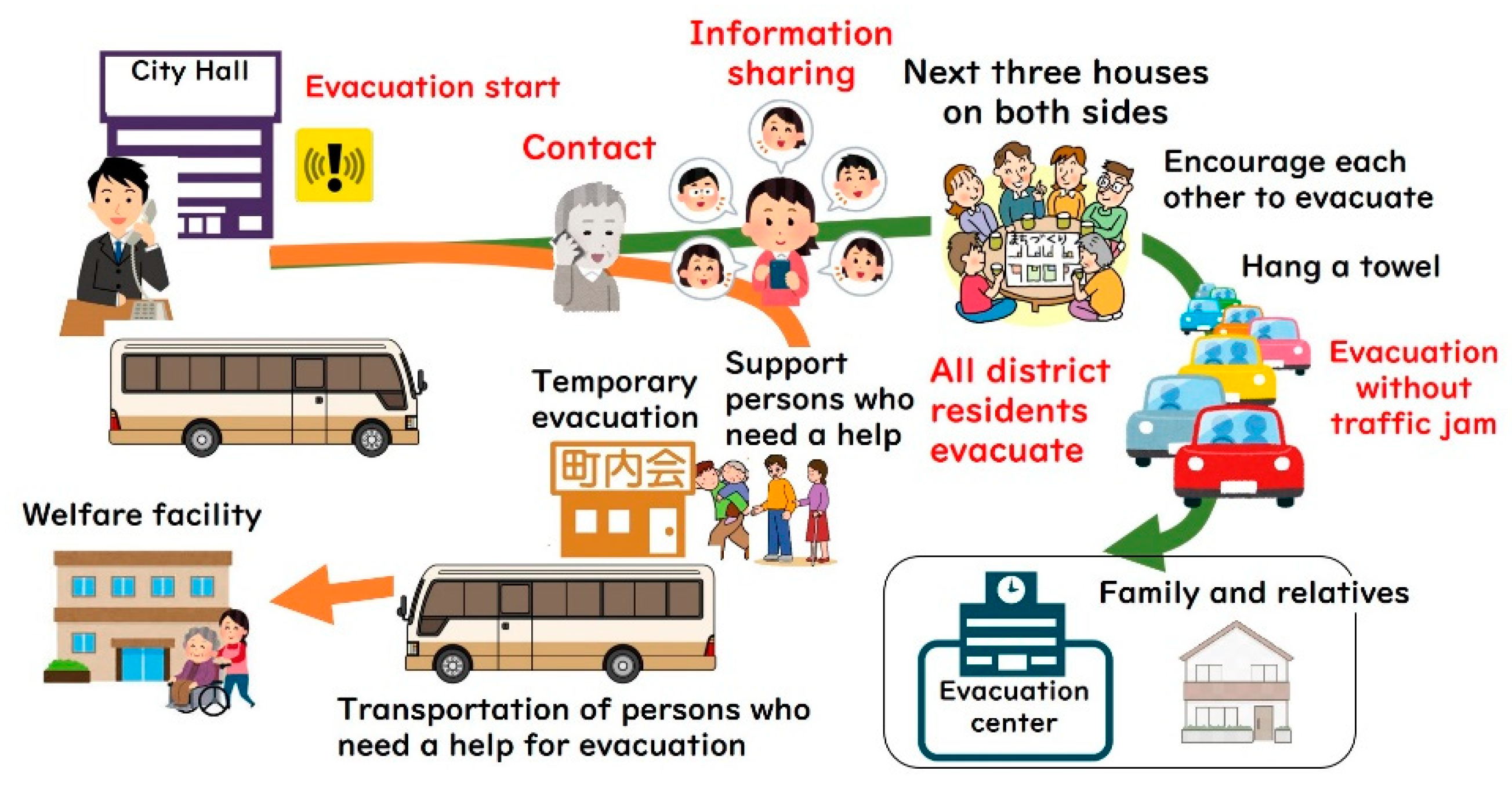
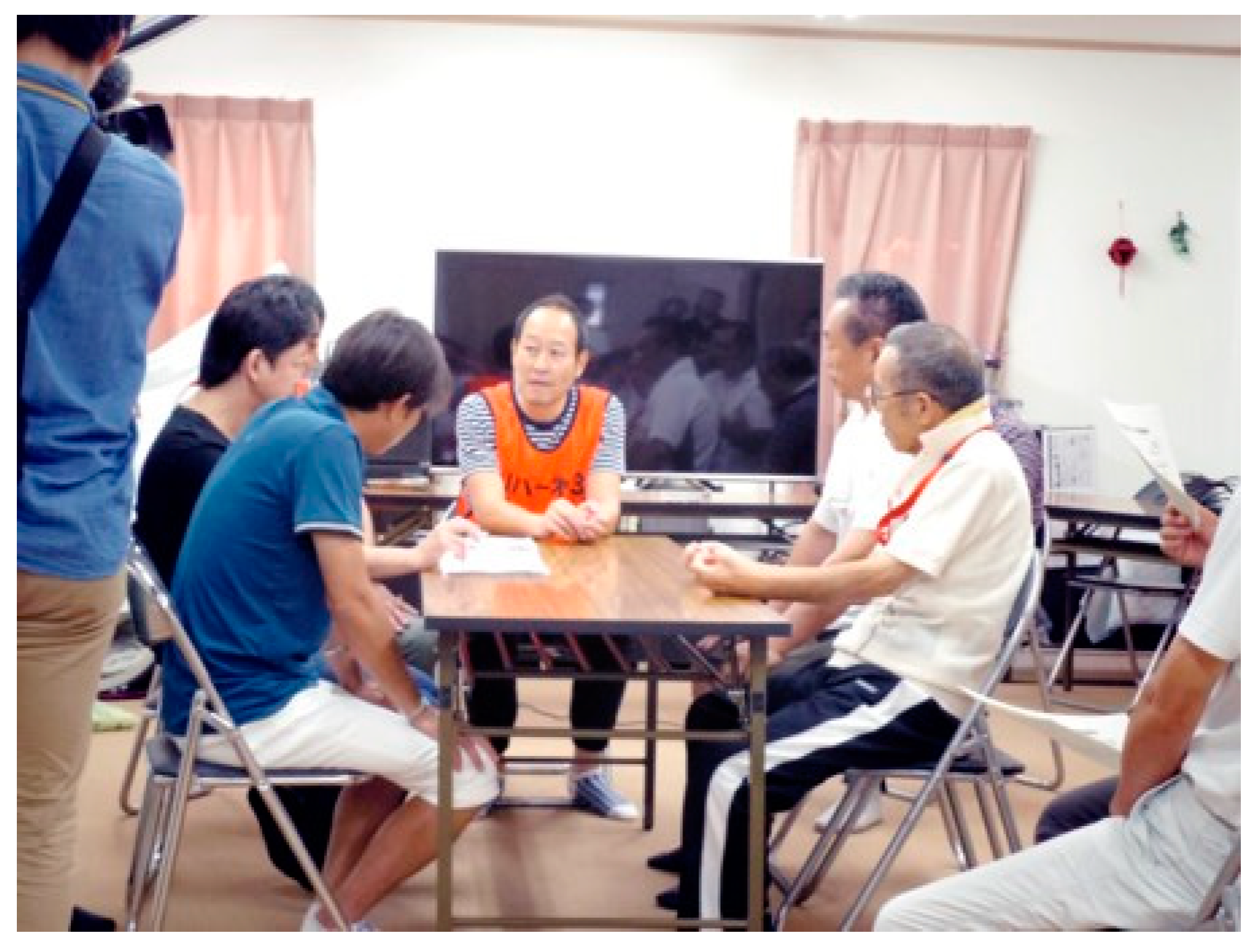
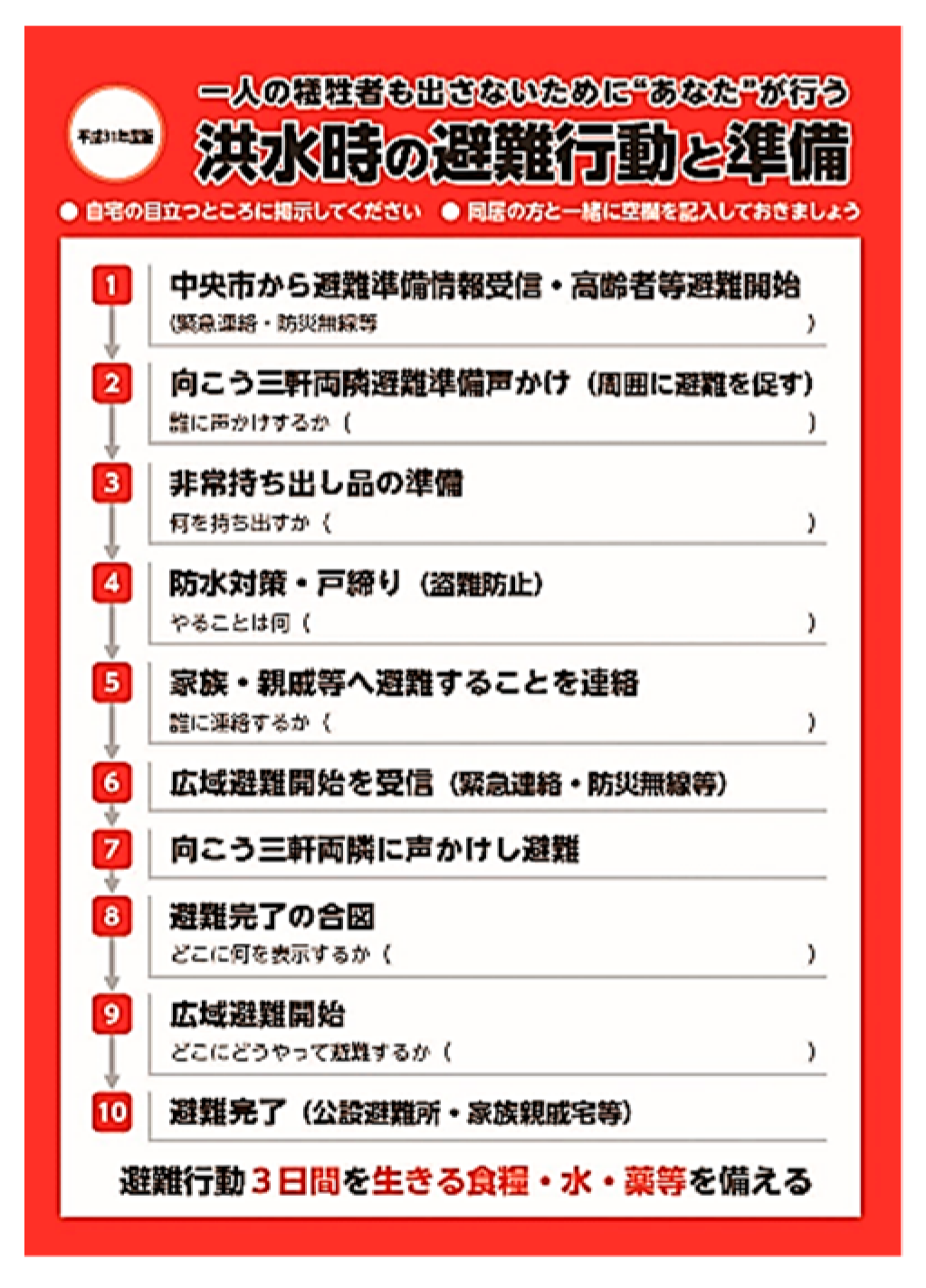
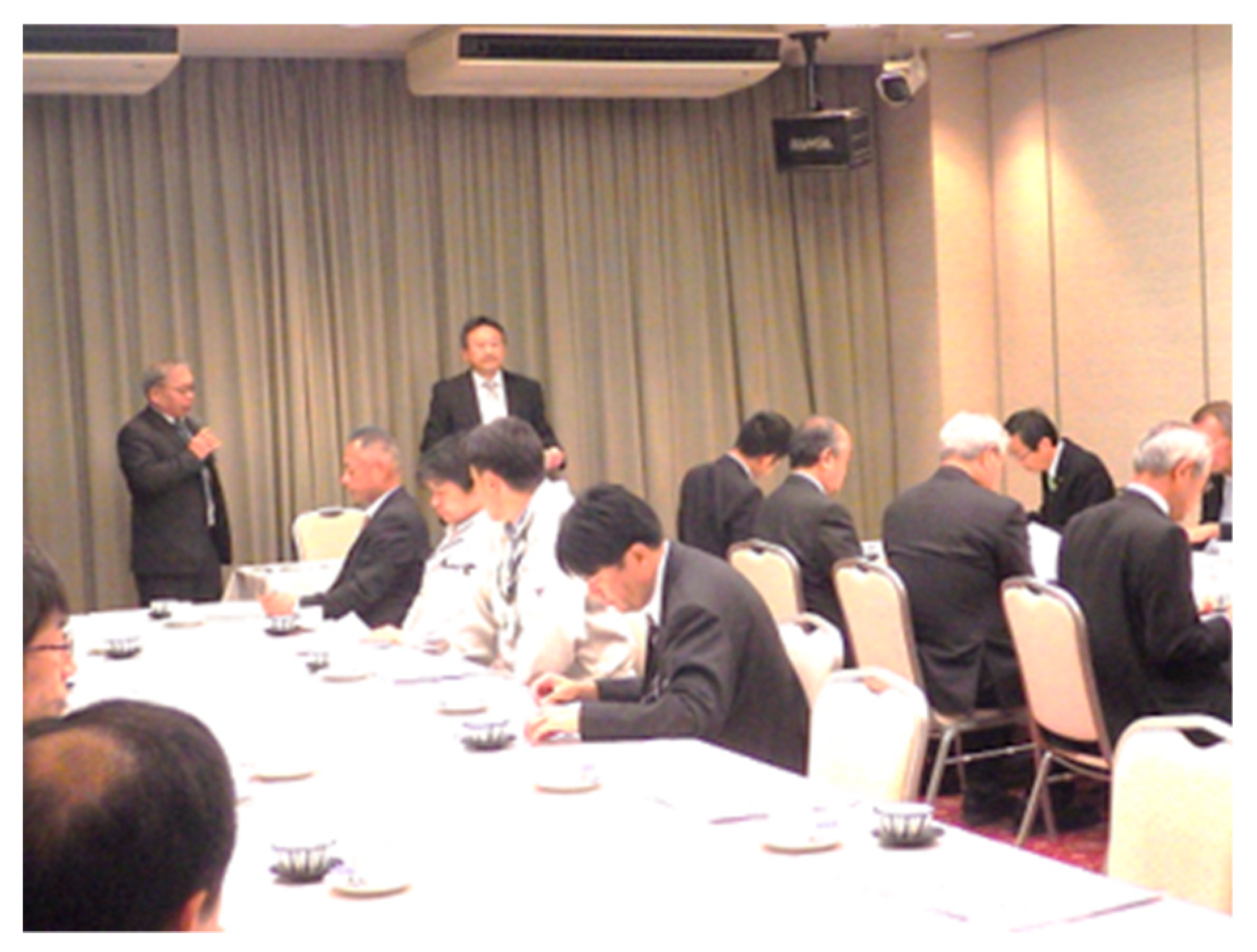
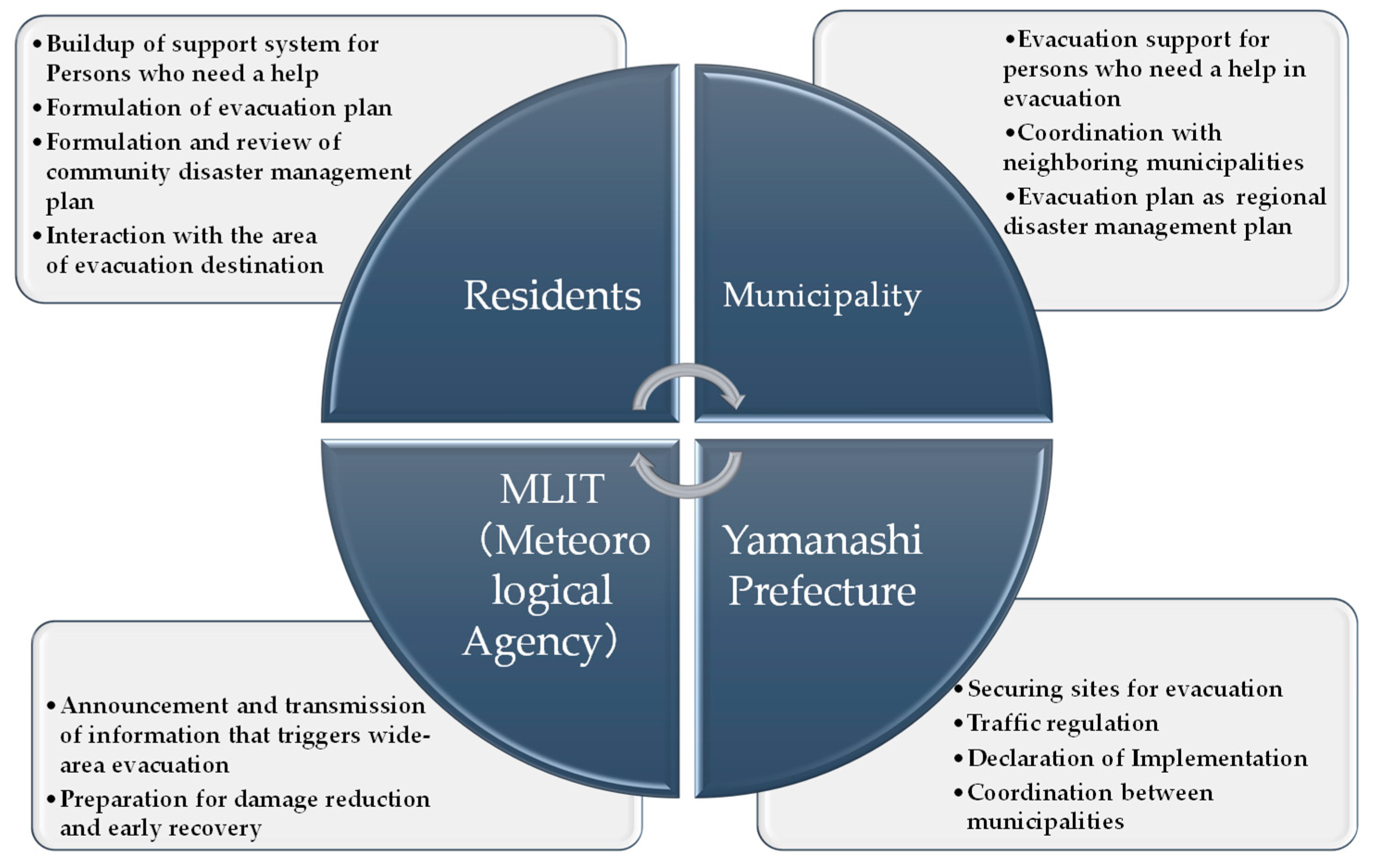
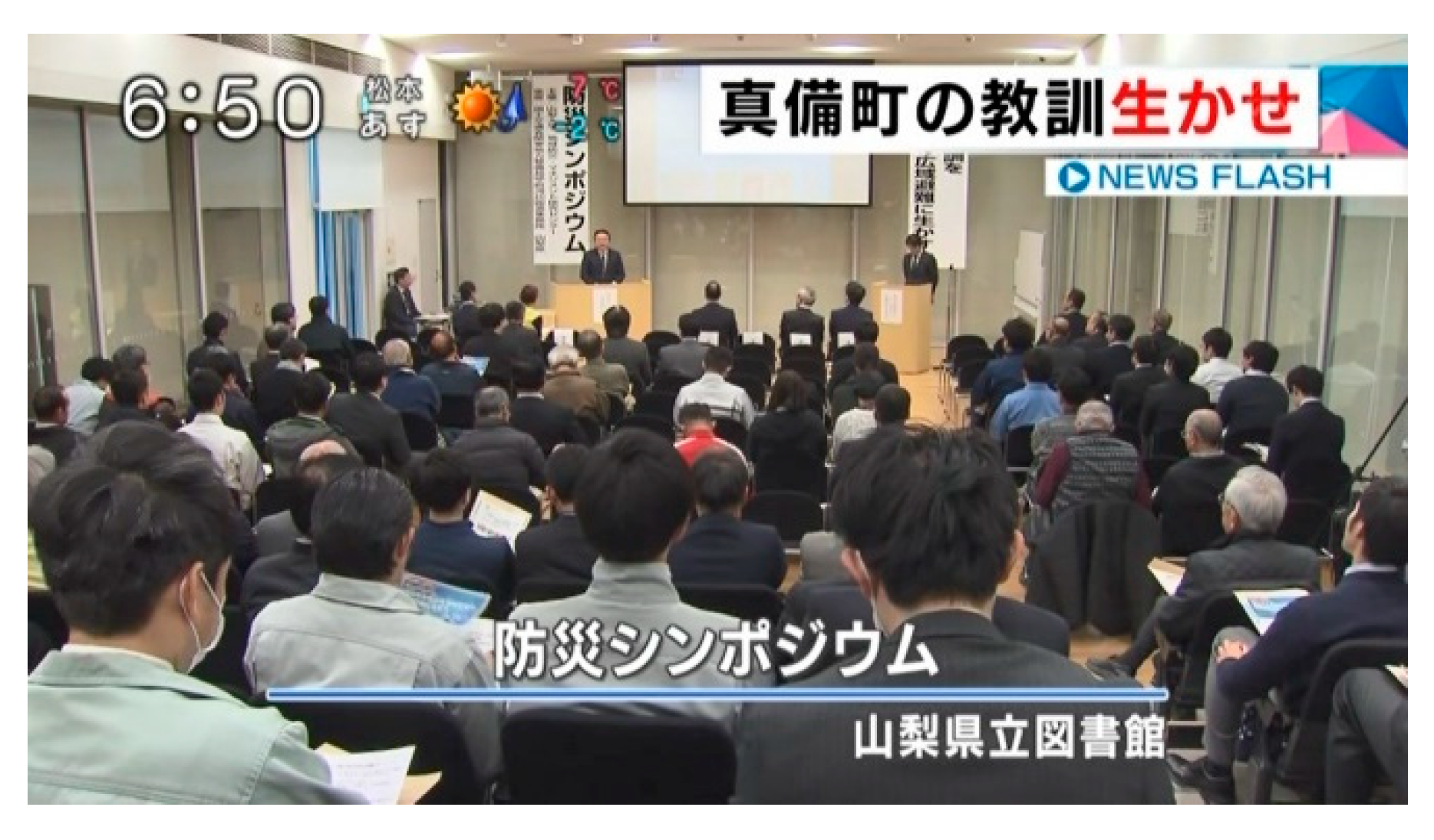



| Year | 1978 | 1986 | 2002 | 2005 | 2019 | |
|---|---|---|---|---|---|---|
| Association | ||||||
| 1st | 162 | 425 | 591 | 577 | (600) | |
| 2nd | 614 | 863 | 894 | (1000) | ||
| 3rd | 519 | 1624 | 1717 | (2400) | ||
© 2019 by the authors. Licensee MDPI, Basel, Switzerland. This article is an open access article distributed under the terms and conditions of the Creative Commons Attribution (CC BY) license (http://creativecommons.org/licenses/by/4.0/).
Share and Cite
Suzuki, T.; Watanabe, T.; Okuyama, S. Facilitating Community Risk Communication for Wide-Area Evacuation during Large-Scale Floods. Int. J. Environ. Res. Public Health 2019, 16, 2466. https://doi.org/10.3390/ijerph16142466
Suzuki T, Watanabe T, Okuyama S. Facilitating Community Risk Communication for Wide-Area Evacuation during Large-Scale Floods. International Journal of Environmental Research and Public Health. 2019; 16(14):2466. https://doi.org/10.3390/ijerph16142466
Chicago/Turabian StyleSuzuki, Takeyasu, Takanori Watanabe, and Shin’ichiro Okuyama. 2019. "Facilitating Community Risk Communication for Wide-Area Evacuation during Large-Scale Floods" International Journal of Environmental Research and Public Health 16, no. 14: 2466. https://doi.org/10.3390/ijerph16142466
APA StyleSuzuki, T., Watanabe, T., & Okuyama, S. (2019). Facilitating Community Risk Communication for Wide-Area Evacuation during Large-Scale Floods. International Journal of Environmental Research and Public Health, 16(14), 2466. https://doi.org/10.3390/ijerph16142466




